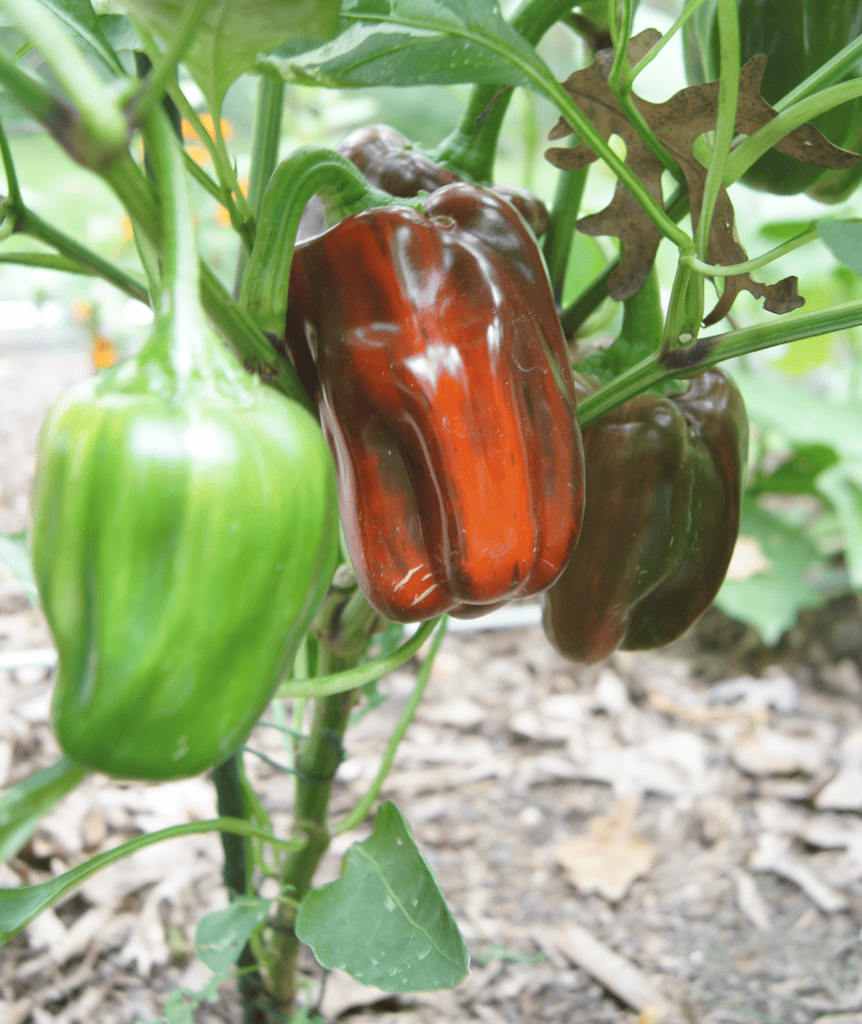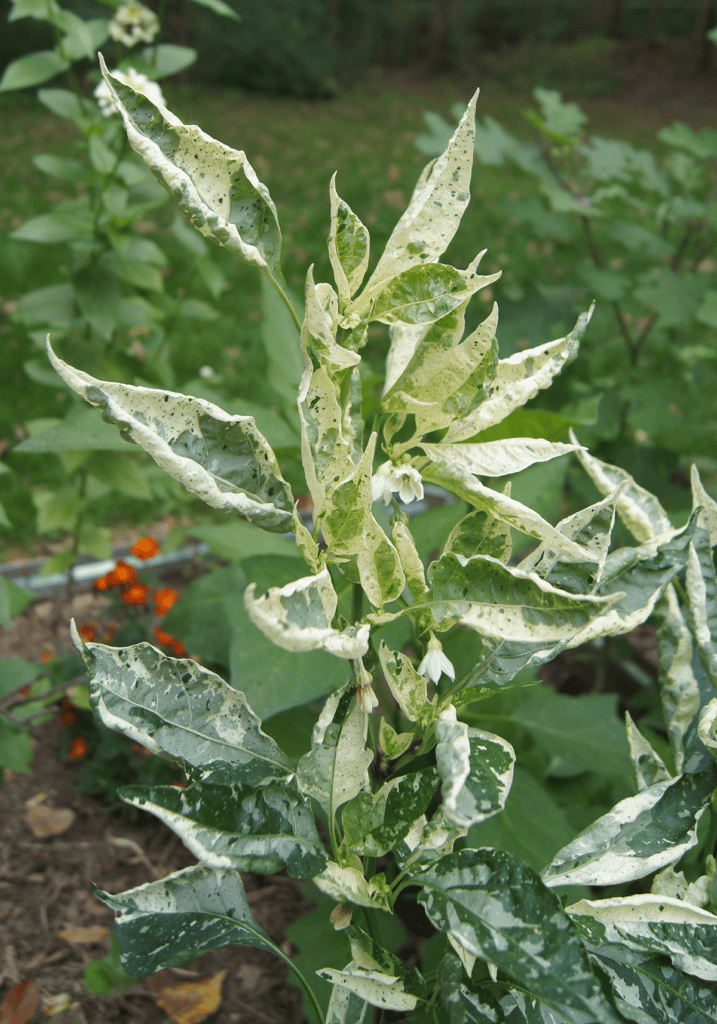Candy Cane Peppers: A Twist on the Classic Bell
While most peppers we talk about are spicy (hence our name), mild and non-spicy peppers can still be a great addition to your garden and kitchen. Read on to learn about the candy cane pepper, a mild hybrid of bell peppers with a twist!
Facts about Candy Cane Peppers
Candy Cane Peppers
| Heat level: | Mild | |
| SHU: | 0 - 0 | |
| Classification: | Capsicum annuum | |
| Origin: | North America | |
| Flavor: | Sweet |
What are candy cane peppers?
Candy cane peppers are a hybrid pepper variety known for their striped fruits and variegated foliage. They’re relatively compact at around 2-3 feet tall and highly prolific, producing dozens of peppers a season.
The plants are unique and beautiful, and the unripe pods are especially striking with their vertical streaks of white and green. Their colorful stripes resemble candy canes, which is where they get their name.
How hot are they?
Like bell peppers, candy cane peppers have zero heat. They should be mild enough for children and those sensitive to spicy foods.
What do they taste like?
Candy cane peppers have a sweet, mild taste, making them an excellent option for snacking, dipping, and making salsa. They’re also highly versatile and usable in the kitchen. While smaller than red bells, they’re similar in flavor and uses.
They can be picked unripe (like green bells) but are less sweet and taste more vegetal in this stage. Once they ripen to red, the stripes mostly disappear, turning a rich red color that brings more sweetness and nutrition.
Are candy cane peppers the same as bell peppers?

In terms of shape and flavor, candy cane peppers are similar to bell peppers. But there are a few minor differences to note. The most obvious difference is that candy cane peppers develop vibrant stripes as they mature. However, these stripes eventually disappear when the pepper matures fully, leaving them more closely resembling bells.
Candy cane peppers tend to be smaller and thinner-walled than bell peppers, only growing to 3-5″ long, so they may be less suitable for stuffing or drying.
How to use them in the kitchen
Like most sweet peppers, you can use the versatile candy cane pepper in many dishes. They are great for freshly chopped salads, stir fry, stuffed, roasted, or snacking, and they won’t go unused in most households.
Although smaller than bell peppers, they are extremely similar in flavor and can be used similarly or in place of bell peppers. A touch of candy cane pepper will do the trick if you like your salsa sweet and mild.
If you have an abundance of peppers, you can easily freeze them for long-term use. The frozen strips can be tossed right in with cooked meals throughout the winter.
Where to buy candy cane pepper seeds
There are a number of reputable seed companies that sell candy cane pepper seeds, including Pepper Joe’s and Botanical Interests. However, be sure to buy from a trusted seller, as hybrid varieties must come from a professional farm.
Growing candy cane peppers
Since candy cane peppers are not common in grocery stores, you’ll have to grow them for yourself to give them a try. The plants are relatively compact, although you may want to stake them to provide extra support. Top-heavy plants may also benefit from a small tomato cage.
Their bold, striped fruit and variegated leaves make for an edible ornamental plant that stands out in any garden.

When to pick candy cane peppers
There’s no wrong time to pick candy cane peppers; it just depends on your personal taste.
If you pick candy cane peppers while they’re still striped, the fruits are ready earlier than many other pepper types, which usually takes about 60-65 days after transplanting. The unripe pods are beautiful, with vertical streaks of white and green. In this stage of growth, the peppers will taste more vegetal, similar to green bell pepper.
However, if you leave them to ripen to red, the stripes mostly disappear, turning into a rich red color, and they’ll become sweeter and more nutritious.
Can you save the seeds from candy cane peppers?
Since candy cane peppers are hybrids, saving seeds will lead to genetic variations, so it’s usually not recommended. That means that the new fruit that grows won’t necessarily resemble the original striped fruit of its parents. It’s best to buy fresh seeds every year from reliable sellers.
However, I used up all of my candy cane peppers seeds and will be experimenting with saved seeds in the 2025 growing season!
Whether you want to enjoy them fresh, stuffed, roasted, or in salsa, candy cane peppers are a great addition to any dish. Just remember to buy new seeds from a reliable seller every year, and you’ll be enjoying these sweet and mild peppers in no time!

